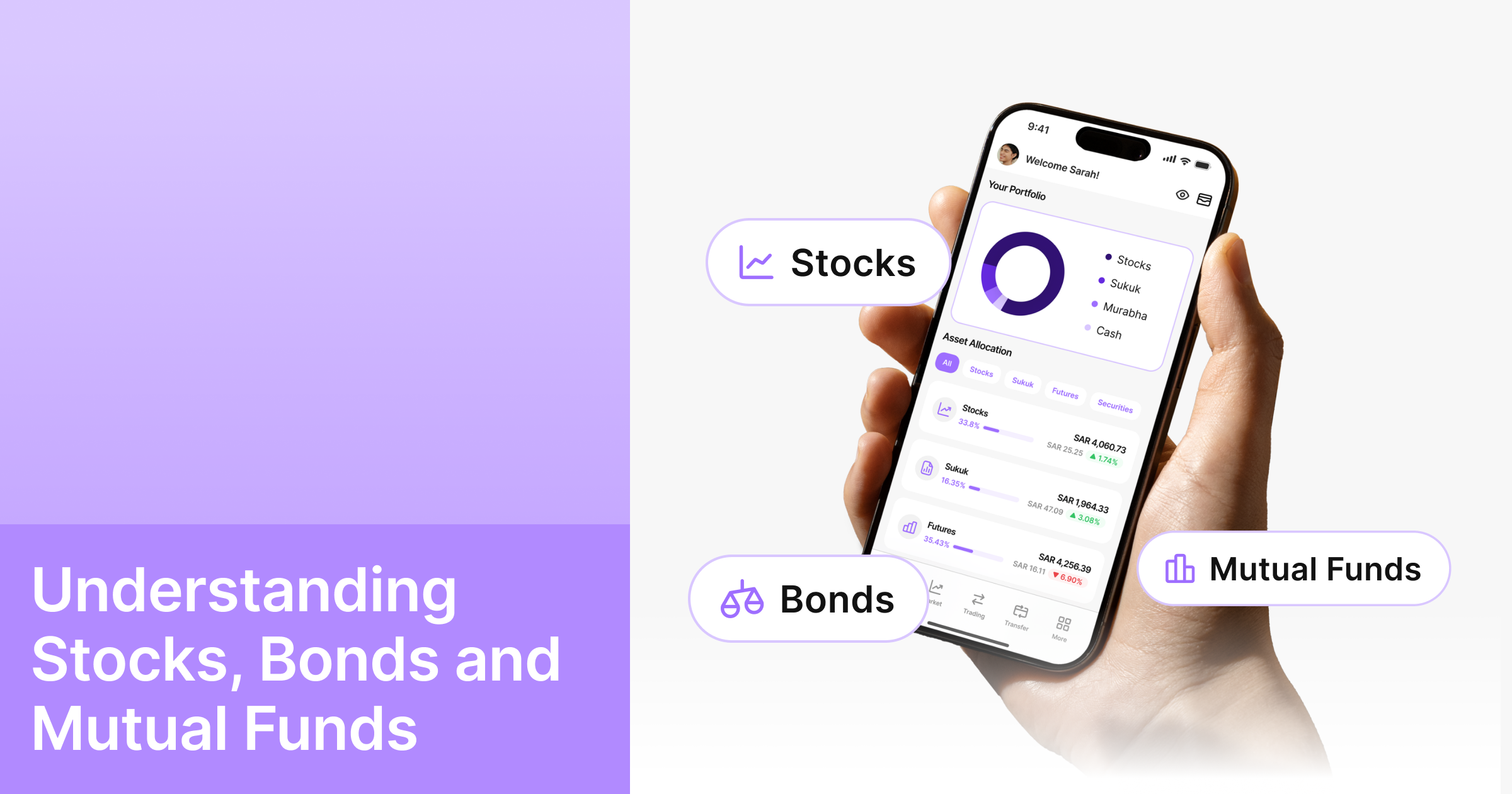The Saudi market still appeals to investors due to its fast economic growth. The economy of the Kingdom is proof that it is determined to alleviate its dependence on oil and revenue. This transformation is facilitated by the Saudi Vision 2030 projects that bring in new business opportunities in various sectors, which fall into different investment scales. Such projects go beyond the infrastructural improvements to introduce new investment opportunities to companies in any line of business. The Saudi market stands firm when it comes to levels of liquidity. Liquidity in the market is an advantage to the investors as it helps them relocate their positions as they see fit. The availability of financial liquidity in the market attracts regional and international investors seeking good investment opportunities.
As stock investments continue to grow in popularity across Saudi Arabia, more individuals are choosing them over other types of investments. This increasing interest makes risk management more important than ever. Successful investors are those who can strike the right balance between the pursuit of high returns and the ability to withstand market volatility. Maintaining this balance helps promote financial stability and supports a long-term, sustainable investment approach.
Whether you’re new to investing or have years of experience, this article offers practical insights to help you understand and manage risks while exploring the evolving potential of the Saudi stock market.
Types of Risks in the Saudi Market
Understanding the different types of risks is an essential part of navigating the Saudi equity market:
- Market Risk: This refers to general price fluctuations influenced by economic or political factors. For example, oil price volatility or regional geopolitical events can significantly affect market performance.
- Company-Specific Risk: Tied to the financial and operational health of individual companies, such as leadership quality, industry competition, or company-specific news.
- Liquidity Risk: This arises when it’s difficult to sell an asset quickly without affecting its price. While less common with heavily traded stocks, it can be a concern for low-volume or small-cap equities.
- Regulatory Risk: Related to sudden changes in laws or regulations, such as new taxes or revisions in foreign investment rules that can influence overall market attractiveness or specific sectors.
Every investment is associated with risk. Not to avoid risk at all, rather, to learn it and thoroughly consider it. The knowledge of these risks would aid investors to make better decisions in choosing an investment with adequate expected returns and reasonable exposure. This knowledge forms a basis of establishing a flexible, goal-oriented investment portfolio.
Strategies to Balance Risk and Return
Balancing risk and return isn’t just a good practice; it’s essential, especially when it comes to investing in the Saudi Arabian market, which is dynamic. Below are key strategies to consider:
- Diversify Your Portfolio:
Diversification reduces reliance on any single asset or sector. Consider spreading investments across industries, company sizes, and instruments, such as stocks, investment funds, sukuk, or income-generating real estate.
This helps reduce the impact of underperformance in one area on the overall portfolio.
- Set Clear Investment Goals:
Start with your purpose. Are you aiming for regular income? Long-term capital growth? Asset preservation?
- Long-term goals might involve accepting short-term volatility.
- Steady income goals may lean toward safer, less volatile assets.
Clear goals help define your risk tolerance and guide your investment approach accordingly.
- Rely on Research and Analysis:
Effective investing is driven by knowledge, not guesswork. This includes:
- Financial analysis: revise balance sheets, profit ratios, and debt levels.
- Sector and market analysis: understand supply-demand shifts, policies, and tech developments.
- Technical analysis: study price trends and chart patterns to identify optimal entry and exit points.
Making decisions based on real data helps reduce exposure to unplanned risk.
- Manage Liquidity Wisely
Unexpected needs or opportunities can arise.
- Keep a portion of your portfolio in cash or highly liquid instruments like money market funds or short-term deposits.
- Avoid locking all capital into assets that are hard to sell, such as thinly traded stocks or certain types of real estate.
Having liquidity provides flexibility and can be the difference between seizing and missing an opportunity.
- Review and Rebalance Regularly:
Markets shift, and so can your financial situation. Periodically review your portfolio, every 3 to 6 months, or at least annually, to:
- Assess asset performance.
- Adjust allocations if needed.
- Reevaluate investments that exceed your intended risk threshold
Rebalancing isn’t about chasing trends; it’s about aligning your strategy with your goals.
- Adopt a Long-Term Mindset:
Price fluctuations are short-term in nature. Remaining in the market during both the rallies and crashes can result in improved long-term returns as opposed to taking action when possible. This translates to long-term in order to enable the effects of compounding to work in your favor and also to iron out the effects of day-to-day volatility.
These valuation approaches can help investors to find a realistic balance between the urge to pursue growth and cope with risk within the new Saudi investment climate.
Tips to Strengthen Your Investment Strategy: Balancing Risk and Return
- Stay Informed:
Follow economic and regulatory news. The Saudi market is sensitive to policy changes, oil prices, and geopolitical developments. Staying updated helps you adapt to new circumstances with greater confidence.
- Combine Fundamental and Technical Analysis:
- Fundamental analysis helps assess a company’s true value based on earnings, financial health, and growth potential.
- Technical analysis helps identify trends, entry points, and exit opportunities.
Using both approaches can provide a more complete picture and reduce impulsive decisions.
- Consider Professional Management:
If time or expertise is limited, managed funds and professional asset managers can be an alternative. These options typically follow defined risk management policies, offering structured exposure to the Saudi equity market.
- Monitor Portfolio Performance:
Compare your returns with relevant market benchmarks, such as the Tadawul All Share Index (TASI). If your portfolio consistently underperforms, it may be time to reassess your asset allocation or management approach.
- Align with Your Investment Life Cycle
Risk tolerance patterns shift according to both age progression and investment goals. Young investors tend to take more risks because they expect higher returns, while older investors seek stable investments with minimal market volatility. Your investment strategy should adapt to your current life stage through minor adjustments to achieve sustainability.
The investment environment requires disciplined application of principles that will help you develop better responses. Remember, Long-term success requires continuous learning, critical thinking, and adaptability.
Disclaimer: All information provided is for educational and awareness purposes only and does not constitute a recommendation or invitation to make any investment decision. Past performance is not indicative of future results. Please consult your financial advisor before making any decisions.
Derayah Financial is licensed by the Capital Market Authority (License No. 27-08109), dated 19/06/1429 AH (June 23, 2008).


